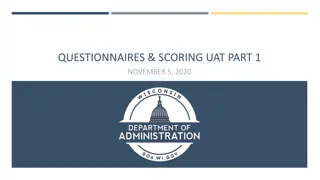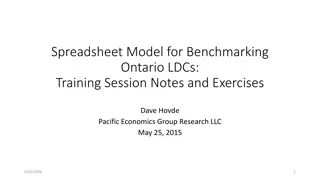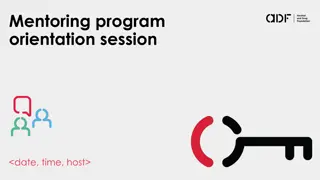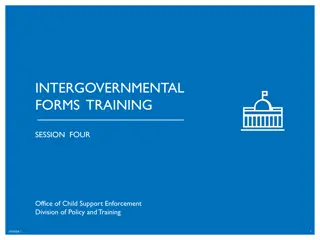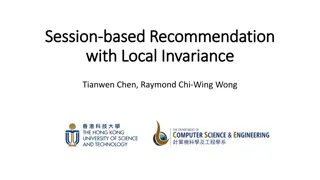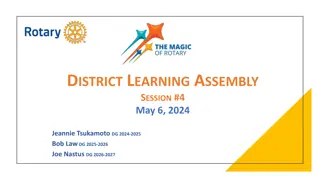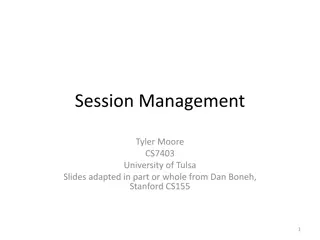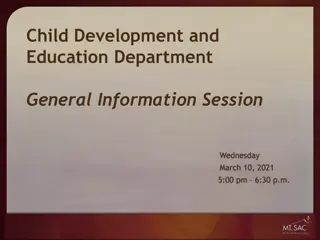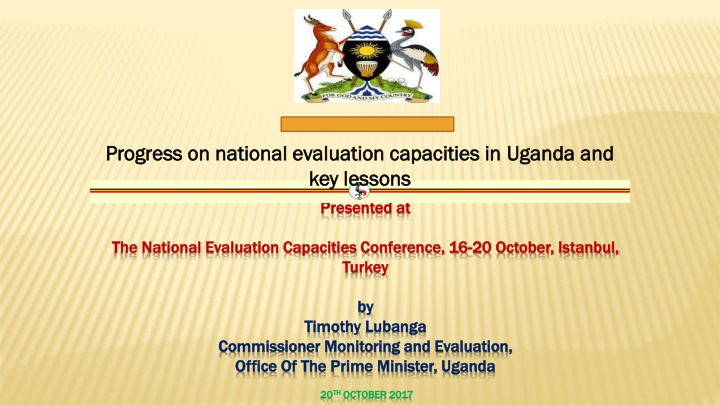
National Evaluation Capacities in Uganda: Progress and Lessons
Discover the progress and key lessons on national evaluation capacities in Uganda as presented at The National Evaluation Capacities Conference in Istanbul. Learn about building enabling environments, linking evaluation systems to SDGs planning, and measures for strengthening evaluation capacities.
Uploaded on | 1 Views
Download Presentation

Please find below an Image/Link to download the presentation.
The content on the website is provided AS IS for your information and personal use only. It may not be sold, licensed, or shared on other websites without obtaining consent from the author. If you encounter any issues during the download, it is possible that the publisher has removed the file from their server.
You are allowed to download the files provided on this website for personal or commercial use, subject to the condition that they are used lawfully. All files are the property of their respective owners.
The content on the website is provided AS IS for your information and personal use only. It may not be sold, licensed, or shared on other websites without obtaining consent from the author.
E N D
Presentation Transcript
Progress on national evaluation capacities in Progress on national evaluation capacities in Uganda and key key lessons lessons Uganda and Presented at Presented at The National Evaluation Capacities Conference, 16 The National Evaluation Capacities Conference, 16- -20 October, Istanbul, Turkey Turkey 20 October, Istanbul, by by Lubanga Timothy Timothy Lubanga Commissioner Monitoring and Evaluation, Commissioner Monitoring and Evaluation, Office Of The Prime Minister, Uganda Office Of The Prime Minister, Uganda 20 20TH THOCTOBER 2017 OCTOBER 2017
OUTLINE OUTLINE 1. Understanding and building enabling environment for national evaluation systems 2. Linking evaluation systems and national and local SDGs (development) planning 3. Measures for strengthening and institutionalizing evaluation capacities 4. What Needs to be Done 2
Building Enabling Environment For National Evaluation System The National M&E framework is guided by the M&E Policy; to improve the design, management and assessment of policies and programs A Government performance assessment system Annual and Half-Annual performance Report of the public sector Prime Ministers Integrated Management Information System Prime Ministers Delivery Unit and the Strategic Coordination Department National Partnership Forum for the Partnership Policy Government Evaluation Facility (GEF) (1. Eval Agenda, 2. Fund, 3. Eval Committee, Resources/database, 4. Eval Standrads and Evaln Guidelines) Close linkages with Budget Monitoring System, Bureau of Statistics, National Development Plan, Uganda Evaluation Association, the Parliamentary Platform on M&E Overseen by a strong Governance mechanism from Cabinet level to Local Government level (Policy Committee, M&E technical working Group) 3
Government Evaluation Facility and national and local SDGs development planning 2
The SDGs Technical Working Groups TWG Lead Agency Lead Agency TWG 1Coordination, Monitoring, Evaluation and Reporting Prime Minister (OPM) 1 Coordination, Monitoring, Evaluation and Reporting 2 Data 3 4 Communication Advocacy 5 Financing 5Financing OPM 2Planning UBOS (NPA) Statistics Bureau (UBOS) Planning Authority 3Data and MoING Information (MoING) 4Communication and Advocacy MoFPED Finance and Budgeting (MoFPED) .
Measures For Strengthening And Institutionalizing Evaluation Capacities OPM, MoFPED, UBOS & NPA have developed a National Standard Indicators framework for Monitoring the National Development Plan To develop a 3 level Hierarchical National Standard Indicator (NSI) framework covering the national, sectoral and service delivery (MDAs) levels of government The framework is to support national development as well measuring achievement of SDGs Currently some indicators are inconsistent and out-dated. Glaring data gaps to meet the requisite information needs The framework was arrived at through reviewing and aligning existing NDP 2 and SDGs indicators for effective planning, monitoring and evaluation, and reporting. Several Training programs on evaluations arranged with international partners, 3ie, CLEAR, IPDET, ETC on evaluations for practitioners, commissioners and managers
Next Steps Key actions Provide a platform for dialogue, advocacy and knowledge generation Strengthen capacities of institutions and evaluators to conduct, commission evaluations in support of SDGs Promote effective evaluation practices to improve evidence-base to achieve the SDGs Commission strategic evaluations periodically Enhance the national evaluation system and policies in support of SDG implementation and review , eg. Strengthen the Evaluation Sub-committee to lead the review processes for the SDGs Introduction of diagnostic tools for evaluation capacities Mobilise resources for rigorous evaluations of sector interventions
the end. the end. 9


